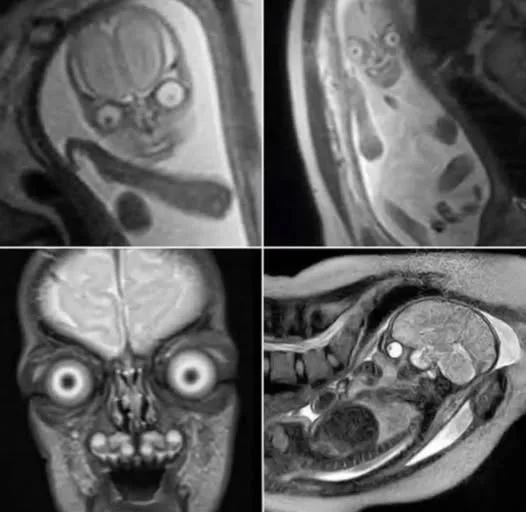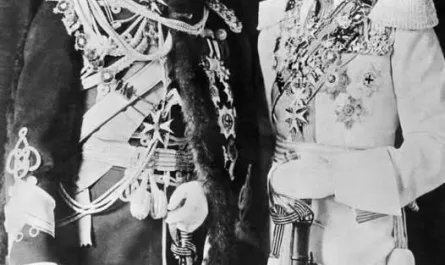You’ve probably seen them: those haunting black-and-white images of fetuses floating in the womb, wide-eyed, pale, and staring straight into the camera like tiny ghosts who already know too much.

They pop up every few months with captions like “This is why pregnant women don’t get MRIs” or “Ultrasounds hide the truth.” People lose their minds in the comments — half terrified, half convinced they’ve glimpsed something supernatural.
Relax. There’s no conspiracy. There’s no horror movie reveal. These babies are 100% normal and healthy.
So why do they look like they’re about to whisper your sins?
Here’s the completely unsexy, totally scientific explanation:
- Babies won’t stop moving Adults lie still for an MRI. Fetuses? They’re doing somersaults, sucking their thumbs, and practicing karate the entire scan. To get anything usable, doctors fire off hundreds of super-fast, slightly blurry images and let powerful software stitch the best parts together into one clear 3D picture. That stitching process can sometimes make the expression look… intense.
- Fluid = drama on MRI MRI doesn’t “see” like a camera. It detects water and fat. The jelly inside a baby’s eyeball (vitreous humor) and the amniotic fluid surrounding them are both packed with water. Depending on the settings used, that fluid shows up either glowing bright white or pitch black. Result? Eyes that look like glowing orbs or deep empty sockets. Spooky? Absolutely. Accurate representation of what the baby actually looks like? Not even close.
- Fetal skin is basically Saran Wrap In the second trimester, babies haven’t built up much fat under their skin yet. Their skin is extremely thin and translucent in real life too — you can literally see blood vessels through it. MRI has no problem showing what’s underneath, so the baby ends up looking ghostly and ethereal.
- The stare is just bad (or perfect) timing Starting around 27 weeks, fetuses open and close their eyes all the time. The final rendered image just happens to capture one frame where the eyes were wide open — and because it’s a reconstructed 3D model, it looks like the baby is locking eyes with you. In reality, two seconds later they were probably asleep again.
In everyday medical practice, fetal MRIs save lives. They’re used when ultrasound can’t give clear enough answers — think brain abnormalities, complex twins, or airway issues that need planning before birth. Radiologists look at dozens of boring, totally normal-looking slices. The dramatic single image that escapes onto the internet? That’s the one somebody thought looked coolest (or creepiest).
So yes, the photos are real. No, your baby does not actually look like a haunted Victorian doll in there.
Stick with ultrasound for the cute prints to show Grandma. Save the MRI for when the doctors actually need it — and trust that what you’re seeing online is just physics doing its dramatic best.
Your baby is still adorable. Promise. 👶





